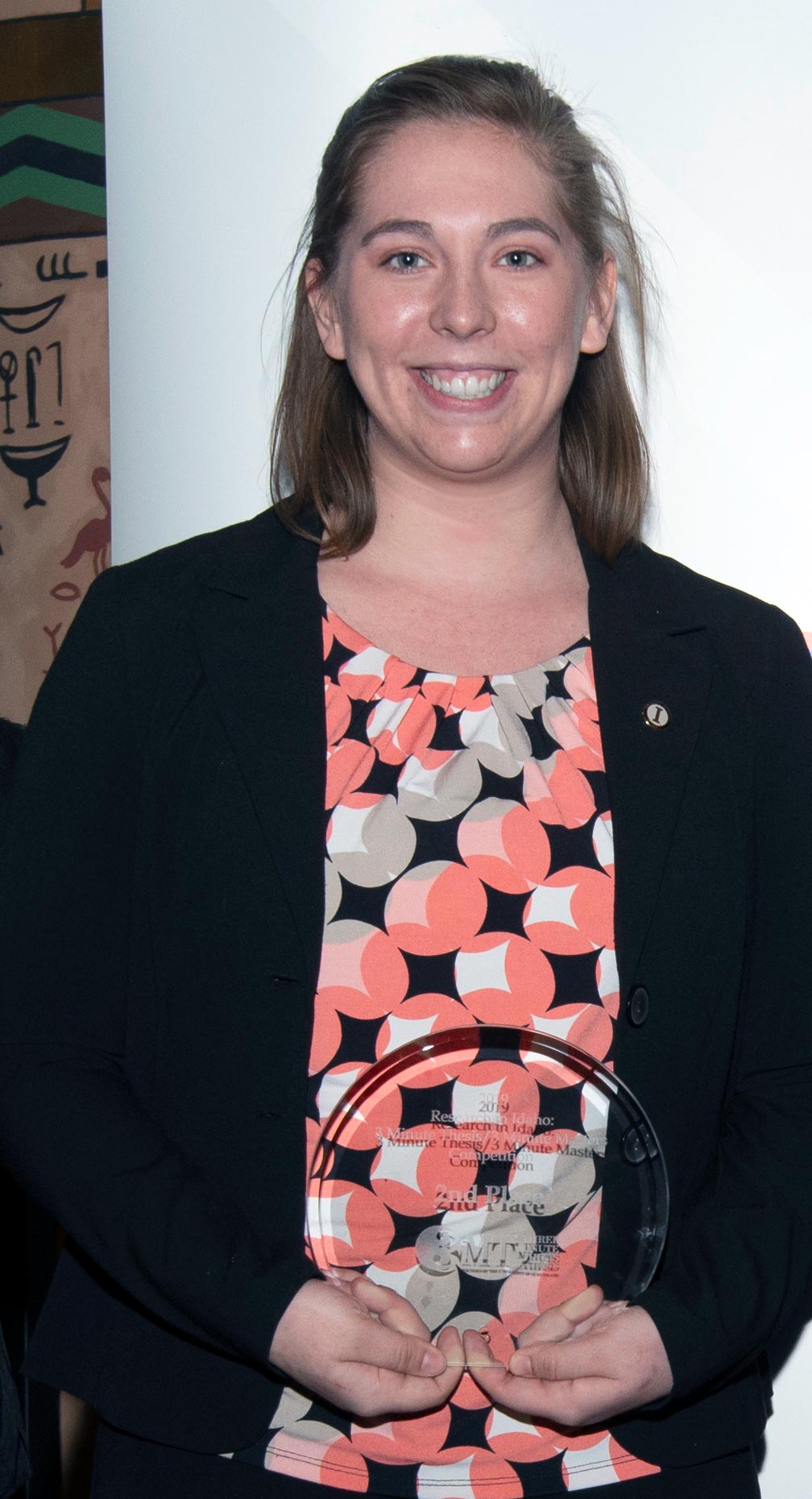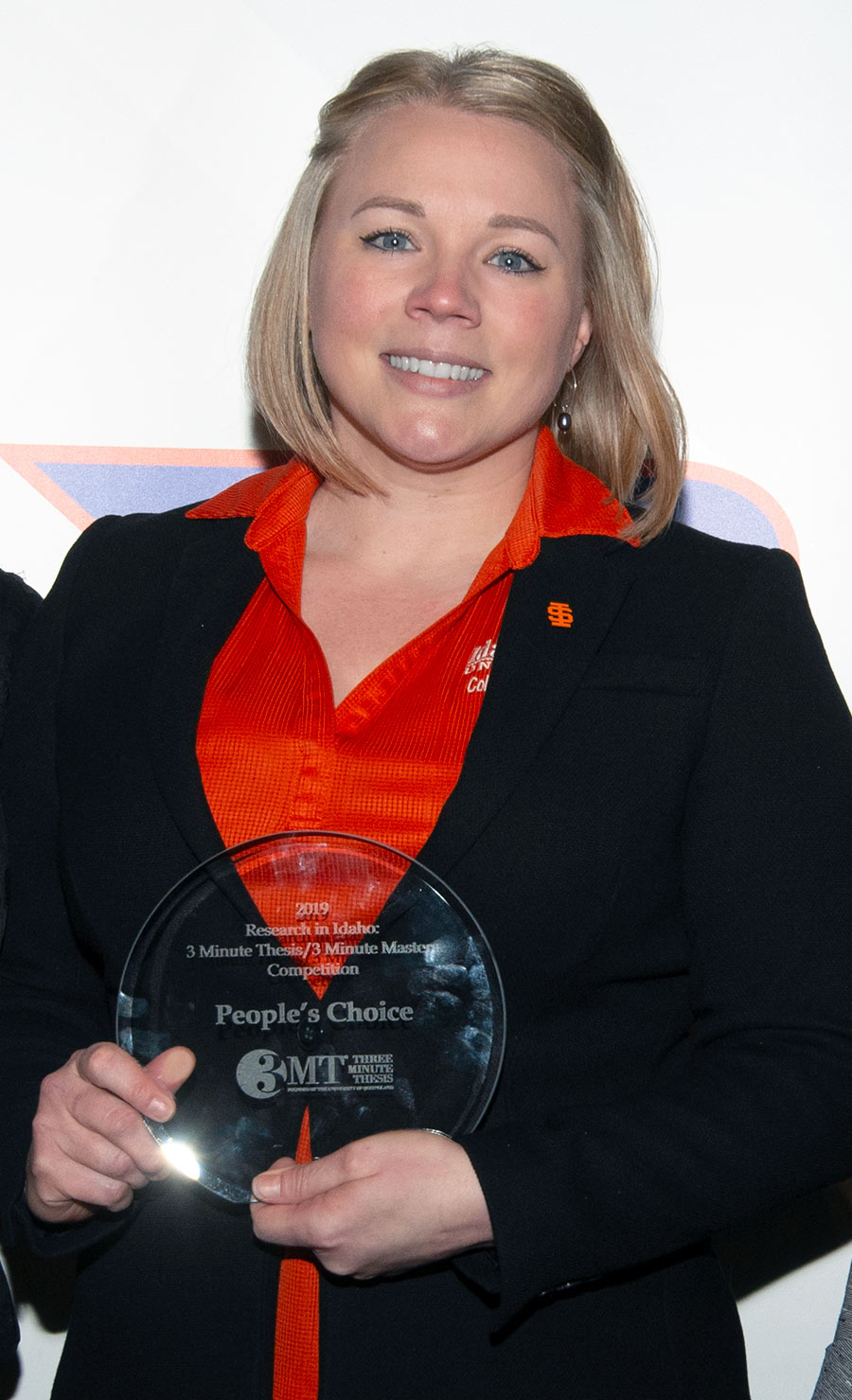2019 Winners
First Place
Ezekiel Adekanmbi
University of Idaho, Chemical Engineering
“Dielectrophoresis: a potent technique for the isolation of Borrelia and Babesia cells”
ABSTRACT:
The precise diagnosis of zoonotic borreliosis caused by the bacteria-Borrelia is currently as challenging as the diagnosis of parasitic alveolates particularly the apicomplexan babesia species that is responsible for piroplasmosis in human and animals. According to the United States Center for Disease Control and Prevention (CDC), the diagnosis should be based upon patients’ symptoms, medical history, tick exposure, and geographical area and blood tests should only be used to provide supporting evidence for the diagnosis.
However, the fact that borreliosis alone has more than 20 symptoms intersecting other diseases makes its diagnosis more difficult. In the current work, dielectrophoresis, which involves the use of non-uniform electric field and leveraging the differential electrical properties of a heterogeneous cell population, is being proposed as a viable alternative toward the detection of the causative agents (borrelia and babesia) of these diseases (borreliosis and piroplasmosis). Preliminary work in this arena has been able to isolate babesia-infected erythrocytes using a lowpower insulator-based dielectrophoretic chip with detection limit of 0.1 percentage parasitized erythrocytes. Ongoing work seeks to characterize and isolate borrelia by leveraging its extracellular contributions within the heterogeneous cell mixture.
Ezekiel Adekanmbi is a doctoral student in Chemical Engineering at the University of Idaho under Dr. Soumya Srivastava.

Second Place
Allison Stevens
University of Idaho, Animal & Veterinary Science
“How do we feed the world?”
ABSTRACT:
Feeding corn dried distillers grains with solubles (DDGS) in low crude protein (CP) diets improves nitrogen (N) utilization. However, it can reduce metabolizable AA supply, especially Lys, which compromises lactation performance. Therefore, our objective was to determine the effects of feeding by-pass protein/rumenprotected AA (RP-AA) supplements in low or high CP diets containing corn DDGS on nutrient intake, milk production, and measures of N utilization in dairy cows.
Six multiparous Holstein cows (619.3 ± 49.8 kg BW; 26.8 ± 6.2 DIM) were subjected to a split-plot 3 × 3 Latin square design with 21 d periods. The whole-plot factor was dietary CP content; low (14.6%; LP) or high (16.6%; HP), and the subplot was by-pass protein/AA supplement (top-dressed); control (CON; no supplement), Lactivate (LAC; 0.11 kg/cow/d) or ProLak (PRO; 0.45 kg/cow/d). All diets contained 10% corn DDGS. Dry matter intake, milk and milk lactose and protein yield did not differ in cows fed the LP than HP diet. However, reducing dietary CP content resulted in a decrease in N intake and apparent total tract CP digestibility, and a tendency for a decrease in milk protein yield.
Intake and apparent total tract digestion of OM, ADF and NDF, microbial N flow, and fecal N excretion were similar across dietary CP content. However, cows fed the LP diet tended to excrete a lower amount of total urinary N and urea-N, and excreted a lower amount of total N than cows fed the HP diet. Similarly, BUN concentration was lower, and MUN concentration tended to be lower when N intake was restricted. However, there was no supplement effect on nutrient intake and digestibility, milk and milk component yields, and all measures of N utilization.
Overall, feeding corn DDGS in a LP compared to a HP diet had a marginal effect on production performance, which possibly negated the potential benefits of providing supplemental bypass protein/RP-AA under our experimental conditions. However, feeding corn DDGS in a LP than HP diet improved N utilization, which is beneficial from an environmental sustainability standpoint.
Allison Stevens is a Masters student in AVS at the University of Idaho studying under Dr. Gwinyai Chibisa.

Third Place
Jessica Whitaker-Fornek
Idaho State University, Biological Sciences
“A peek inside the eggshell: how a baby bird's nervous system develops to control breathing”
ABSTRACT:
Although breathing seems to require little conscious effort in practice, the breathing control infrastructure responsible for coordinating the muscular efforts of breathing must first develop properly. Rhythmic spontaneous neural activity (rSNA) is a characteristic feature of normal nervous system development. To date, we do not fully understand the factors responsible for maintaining rSNA.
Using the in vitro zebra finch embryo medulla preparation, the Pilarski laboratory has recorded rSNA from embryonic day (E) 4 through E14. During this time the bird embryo transitions from purely diffusive gas exchange to aerial ventilation. In addition, the physiochemical environment within the egg changes over the course of incubation—becoming increasingly acidic due to the metabolism of the growing embryo. Accordingly, I hypothesized that changes in pH could play a role in rSNA maintenance.
To test this hypothesis, I performed an experiment in which I delivered acidic fluid to the medulla preparation for one hour while recording rSNA. Experiments were performed on 33 embryos aged E4-E14. Each embryo received one treatment.
Results suggest that rSNA is sensitive to changes in pH and the effects of the treatments differ depending on embryonic age. E4-E6 and E7-E11 embryos demonstrated slower rates of rSNA when exposed to acidic treatment (75 ± 7.1% and 64 ± 12% of control frequency, respectively). In contrast, E12-E14 embryos increased their rSNA frequency during acidic treatment (172 ± 23% of control frequency). This switch in the pH-evoked response may reflect a shifting role for pH as medullary neural circuits specialize for breathing control.
Jessica Whitaker-Fornek is a doctoral student in Biological Sciences at Idaho State University studying under Dr. Jason Q. Pilarski.

People's Choice
Staci Phelan
Idaho State University, Educational Leadership
“Real World Retention & Career Path Internships”
ABSTRACT:
Retention of students is a problem faced by institutions of higher education around the world. Higher education institutions are required to report retention data to government agencies, and depend on tuition funding more than ever before. Prior research has identified many characteristics that when present, increase the likelihood of early departure. Most retention research is quantitative, examining large numbers of students to generate findings that are generalizable to the population at large. However, students depart for multiple reasons, not just one. The CPI program provides opportunities for students to gain real-world work experience in their field. This study aims to determine if the CPI program, as a college experience, contributes to retention for students who might otherwise dropout.
The study used qualitative analysis to gain understanding of student perspectives about why they chose to remain enrolled, as well as their perspectives about the CPI program. Results confirmed prior research for many of the reasons students remain enrolled, such as support from family, connection with a faculty mentor, and a sense of belonging on campus. Every student in this study had at least one characteristic that increased their likelihood of early departure, and 80% of participants had three or more. In terms of retention, 80% self-reported a graduation date within six years of starting college and none had a GPA below a 2.0. These findings indicate that students in the CPI program are successfully completing college, but further research should examine if CPI students are different from the student body in general.
Staci Phelan is a doctoral student in Educational Leadership at Idaho State University studying under Dr. Richard Wagoner.











